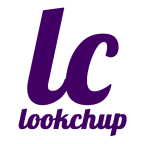Publishing eBooks has become an effective way for writers, marketers, and entrepreneurs to share knowledge, build authority, and generate income. Choosing between offering an eBook for free or charging for it depends on your goals, audience, and the type of value you’re providing. Both strategies offer benefits and challenges. Picking the right one depends on what you want your content to achieve.
Free eBooks: Building Trust and Reaching More Readers
Free eBooks remove the price barrier. That alone can help attract a larger audience, especially readers unfamiliar with your work. Many creators use free content as an introduction to their ideas, style, or product line. For someone trying to grow an audience, this strategy can build trust quickly.
Imagine a business coach who releases a free guide on time management. By offering it at no cost, they increase the chance of reaching thousands of potential clients. Some readers might later join an email list, attend a webinar, or book a consultation. In this example, the eBook works more like a marketing tool than a product.
That doesn’t mean free comes without cost. Time, energy, and sometimes money go into creating quality content. You still need to write, edit, and promote the eBook. To make the effort worth it, think beyond downloads. You can ask readers to sign up for your newsletter before downloading the eBook. You can also add calls to action inside the content to drive traffic to your website or services.
Many successful writers use free eBooks as a way to start conversations. They see it as a first step. If readers find the content helpful, they’ll often look for more. That long-term relationship becomes valuable.
Paid eBooks: Earning While Sharing Knowledge
Charging for an eBook helps generate income directly from your writing. If your content solves a specific problem or covers a niche topic, readers may gladly pay for that value. People often associate a price tag with quality.
Take the example of a graphic designer with ten years of experience. They might write an eBook about branding strategies for small businesses. Since the topic is specific and aimed at professionals, selling it makes sense. Readers in that field are looking for expert advice and may prefer a paid product if they trust the creator’s background.
With a paid model, you can also reinvest in the product. You might hire a professional editor, create a stronger design, or partner with someone to handle promotion. All of these steps can raise the quality of the book. If the content meets reader expectations, positive reviews and word of mouth can follow.
However, paid eBooks come with their own set of challenges. You’ll need a strong message to convince people to buy. Testimonials and social proof help with that. You may also need to manage payment systems, provide customer support, and address refund requests. These tasks require time and planning.
Still, if your book offers something unique or time-saving, many readers will find it worth the price.
Let Your Goals Decide the Approach
What you want from your eBook should guide your decision. If you’re new and trying to reach a wider audience, free eBooks make sense. They help build awareness and introduce you to people who might not know your work. This approach is often used by creators focused on growth and exposure.
If you’re more established or offering content that meets specific needs, a paid option might work better. Selling your eBook can help show the value behind your ideas and create a stream of income. You can also combine both approaches.
For example, offer a short eBook for free and a more detailed one for sale. Or share the first few chapters at no cost and sell the full version. These models help attract readers while giving you a chance to earn.
Using eBooks to Support Other Offers
Whether you give your eBook away or sell it, the content can connect to bigger offers. Many creators use eBooks to bring in leads for services, courses, or memberships. By offering real value in writing, they earn trust and show they know their subject.
Consider a writer who gives away an eBook on how to publish on Amazon. Readers who like the material might later buy editing services, cover designs, or coaching packages. The free eBook opens the door.
If you’re selling an eBook, think about extras. You could offer templates, bonus guides, or short video lessons. These add-ons make your offer stronger and give buyers more to work with. They also increase the value of each sale.
An eBook can be much more than a single transaction. Think of it as the beginning of a longer connection. Readers who get results from your content are more likely to return for future products or services.
Choosing a Strategy That Supports Your Future Plans
You don’t have to rush into a decision. Take the time to think about what you want your eBook to achieve. If your focus is growing an audience, giving it away might be the best start. If you’re ready to sell something that solves a clear problem, charging could be the right move.
Plenty of authors start with a free book to build trust. Once they have an audience, they shift to paid offerings. Others test prices and formats to see what brings the best results. Your strategy can evolve as you learn what works.
The most important part is to keep your goal clear. Know what you want your eBook to do. Whether you’re using it to build a following or earn money, the plan should match your larger objectives.


